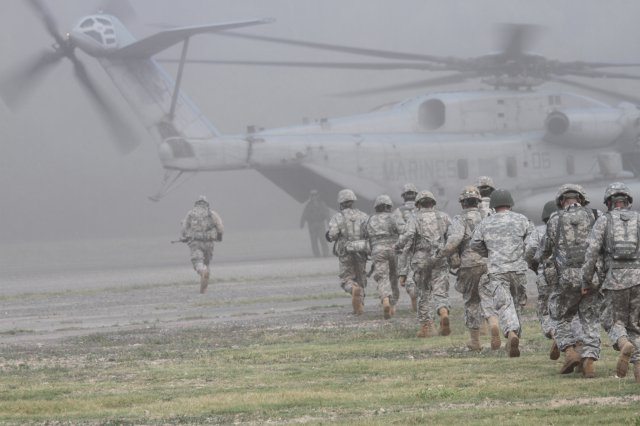The top leaders from Army, Navy, Marine and Air Force Reserve and National Guard were on Capitol Hill here April 17 to provide statements and answer questions regarding their FY14 budget proposals.
Sen. Barbara Mikulski, D-Md., the chairwoman of the full U.S. Senate Committee on Appropriations, Sen. Dick Durbin, D-Ill., the chairman of the Subcommittee on Defense, and Sen. Thad Cochran, R-Miss., the subcommittee’s ranking member, led discussions and listened to testimony from Reserve and National Guard leaders.
“In an increasingly limited fiscal environment, reservists remain efficient and cost-effective solutions to our nation’s challenges,” said Lt. Gen. James F. Jackson, the chief of Air Force Reserve at the Pentagon and the commander of Air Force Reserve Command at Robins AFB, Ga.
In written and verbal testimony, Jackson outlined how the FY14 President’s Budget request would fund Air Force Reserve requirements of approximately $5 billion. It provides for the operation and training of 34 wings, funds 102,212 flying hours, maintains 362 aircraft, and provides for the readiness of 70,400 reservists.
The Senate Appropriations Committee is the largest committee in the U.S. Senate. Its role is defined by the U.S. Constitution, which requires “appropriations made by law” prior to the expenditure of any money from the federal treasury. The Defense subcommittee is responsible for reviewing the president’s budget request, hearing testimony from government officials, and drafting the spending plans for the coming fiscal year.
The Air Force Reserve budget request is about 5 percent of the total Air Force budget, and includes $3.16 billion for operation and maintenance for air operations, service support and civilian pay; $1.7 billion for military personnel; and $45.6 million for military construction.
“Our highest priority project is the construction of a personnel deployment processing center at March Air Reserve Base, Calif.,” Jackson said. “This military construction request also provides for construction of a squadron operations facility for the 513th Air Control Group at Tinker Air Force Base in Oklahoma and an entry control complex at Homestead Air Reserve Base in Florida.”
Air Force reservists have served in every U.S. combat and humanitarian operation throughout the world including Bosnia, Kosovo, Afghanistan, Iraq, Libya, Japan, Mali and the Horn of Africa.
“Currently, more than 2,000 of America’s Citizen Airmen are deployed around the world,” Jackson said. “Additionally, there are over 4,000 serving on active-duty status in direct support of combatant commander requirements.”
Although the FY14 DOD budget request is essentially flat compared to the fiscal 2013 request, it meets the deficit reduction targets required by the Budget Control Act of 2011. This includes a portion of the more than $487 billion required in savings over 10 years. However, the fiscal 2014 budget does not include additional cuts that may be required by sequestration’s requirements to save about $600 billion more in the next 10 years.
“Our ability to effectively respond with a capable force is increasingly threatened by sequestration and fiscal uncertainties,” Jackson said.
The senators questioned the guard and reserve leaders on the impact of more budget cuts and what the ratio should be between active-duty and reserve component forces.
“Perhaps our greatest strength is we retain ‘Airmen for life,’ preserving the considerable investments and expertise of our Airmen beyond their active-duty service,” Jackson said. “Today’s Air Force Reserve is a force of combat-tested warriors.”
Also, the senators led discussions of one of the biggest issues for the future of the Air Force — to develop the right force mix of regular and reserve component Airmen. The “National Commission on the Force Structure of the Air Force” was established by the FY13 National Defense Authorization Act and is tasked to make recommendations on the mix to the president by Feb. 1, 2014.
In the past, the traditional approach to rebalancing during a budget reduction has been to reduce reserve component force structure to preserve active component operational capabilities, or to reduce all components through some proportional or fair-share model to spread the cuts across the force.
“My staff and I look forward to providing input to the National Commission on this important issue,” Jackson said.











